Outbound Links
- 🖼️ yd shown symmetrical
- 🖼️ yd_asymm_1.png
- 🖼️ yd_asymm_2.png
- 🖼️ yd_asymm_3.png
- 🖼️ yerkes_dodson.png
- 🖼️ yerkes_dodson_boxes_labelled.png
- 🖼️ yerkes_dodson_box1.png
- 🖼️ yerkes_dodson_box2.png
- 🖼️ yerkes_dodson_box3.png
- 🖼️ yerkes_dodson_box4.png
- original paper: The Relation Of Strength Of Stimulus To Rapidity Of Habit-formation, Robert M. Yerkes and John D. Dodson (1908)
- https://doi.org/10.1002/cne.920180503
- Topics of Classic Papers in Psychology
- Wikipedia: Yerkes-Dodson Law
- The stages of performance under pressure
- The Yerkes-whatzy law of who now?
Yerkes-Dodson Stress Curve
The "Yerkes-Dodson Law of Arousal" is an extremely useful concept -- provided a few modifications are made to it.
- Firstly, it's not a law. It's a theory.
- Second, it's not a symmetrical curve. Breakdown happens.
- Third, there is no zone which is "optimal." Life is trickier than that!
I don't believe it is symmetrical
Everyone draws it symmetrical:
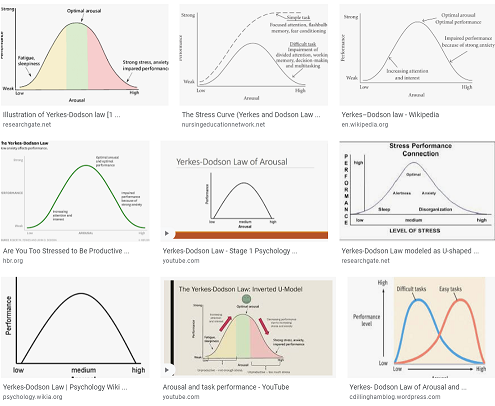
Only a few draw it asymmetrical -- I much prefer these versions:
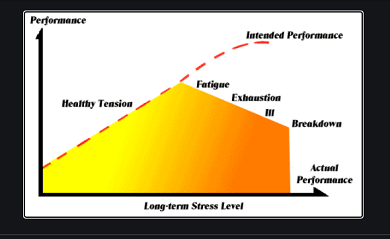
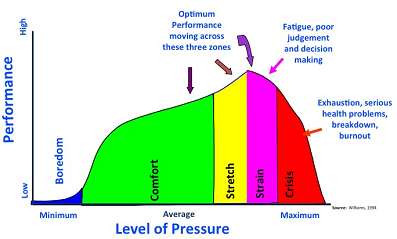
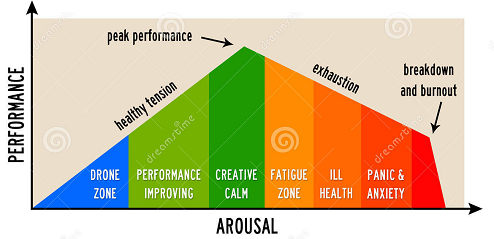
Rough but improved version:
Here is a rough but improved version, built for the purposes of discussing it here.
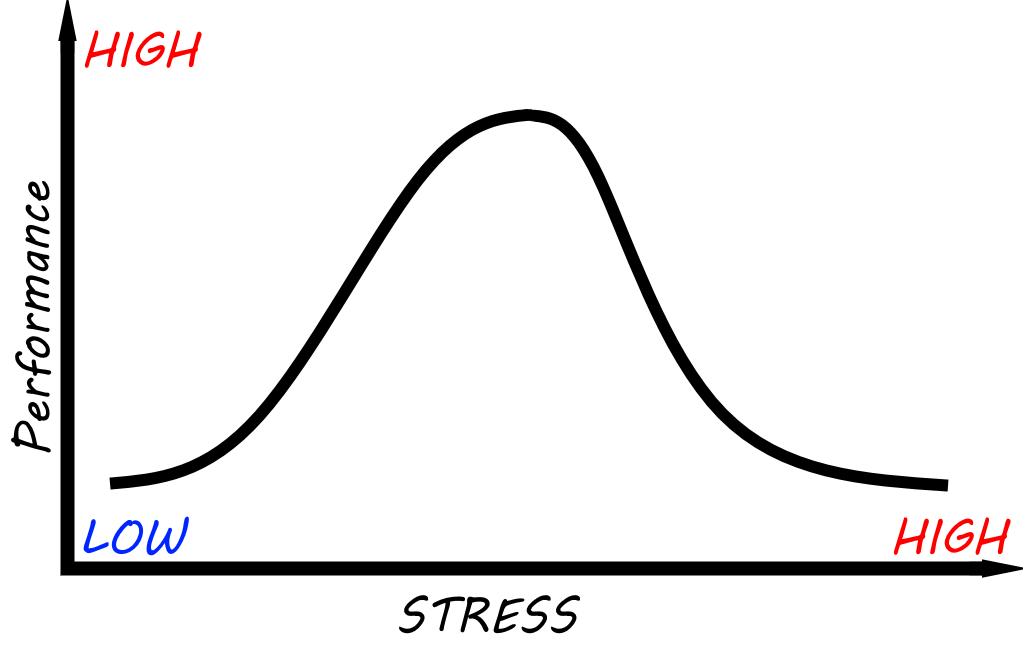
Lessons based on the Yerkes-Dodson Curve
For different tasks, the shape changes
There is no optimal zone (for all time, across all task)
Breakdown happens!
After breakdown you can't simply lower stress and climb back up. You have to start again.
- Where are you now? Where do you want to be?
4.1 Low stress, want to peak stress:
4.2 Middle stress, want to peak stress:
4.3 Peak stress want to stay there
4.4 Low stress, want to stay there:
4.5 Middle stress, want to be low stress
4.6 Peak stress want to be low stress
4.4 Low stress, want to be middle stress:
4.5 Middle stress, want to be stay there
4.6 Peak stress want to be middle stress
Different Zones -- different problems
Every zone has its own problems, and the way you should best respond varies depending on which zone you're in.
TL/RD: Here's a picture that says it all at once:
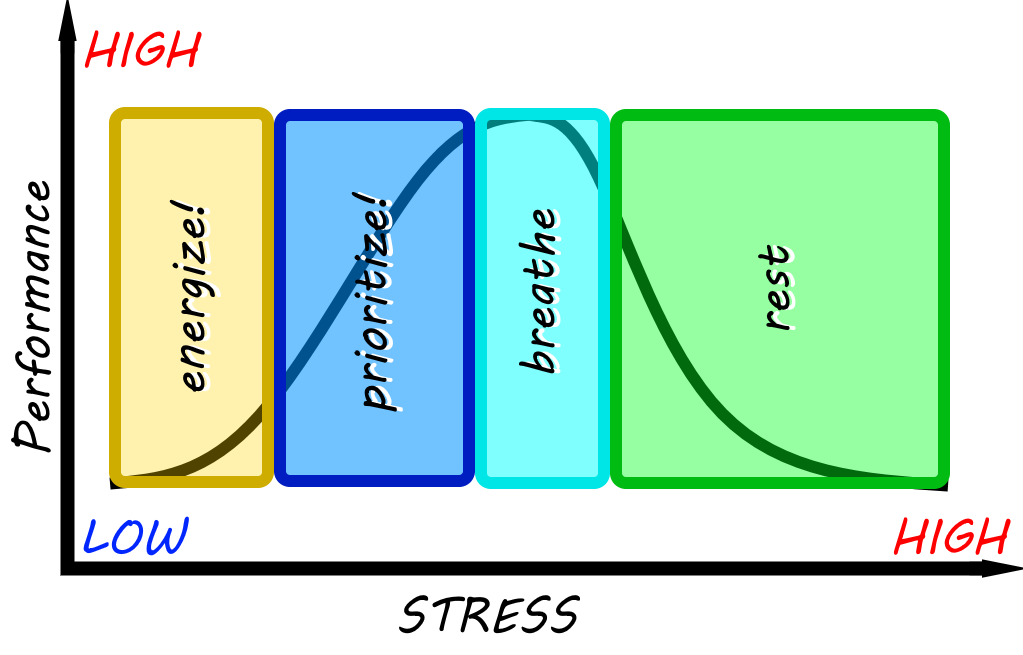
Box 1
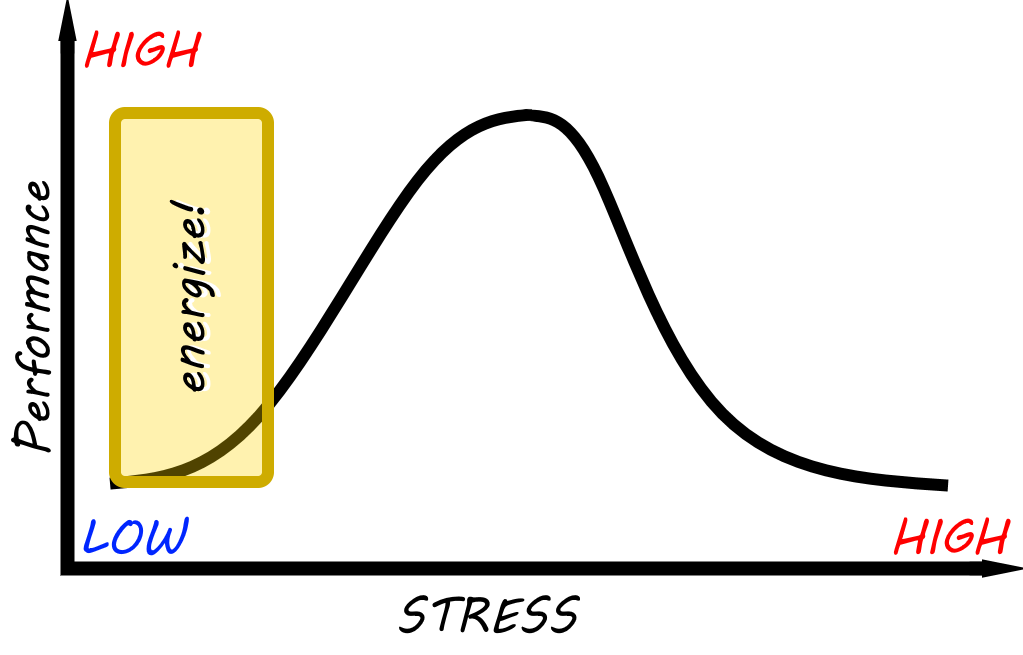
Low arousal, low performance... maybe you want to "energise!"
Wiggle your toes, move your hands. Move your feet. Move your arms. Shake your legs. Shimmy your torso. Stand up, wiggle around. Get moving. Get the blood flowing.
Simple stretches, easy movements.
Listen to music that pumps you up. Something with a beat. Have a spotify playlist (or two) ready for this moment.
Drink some coffee.
Box 2 - Prioritize
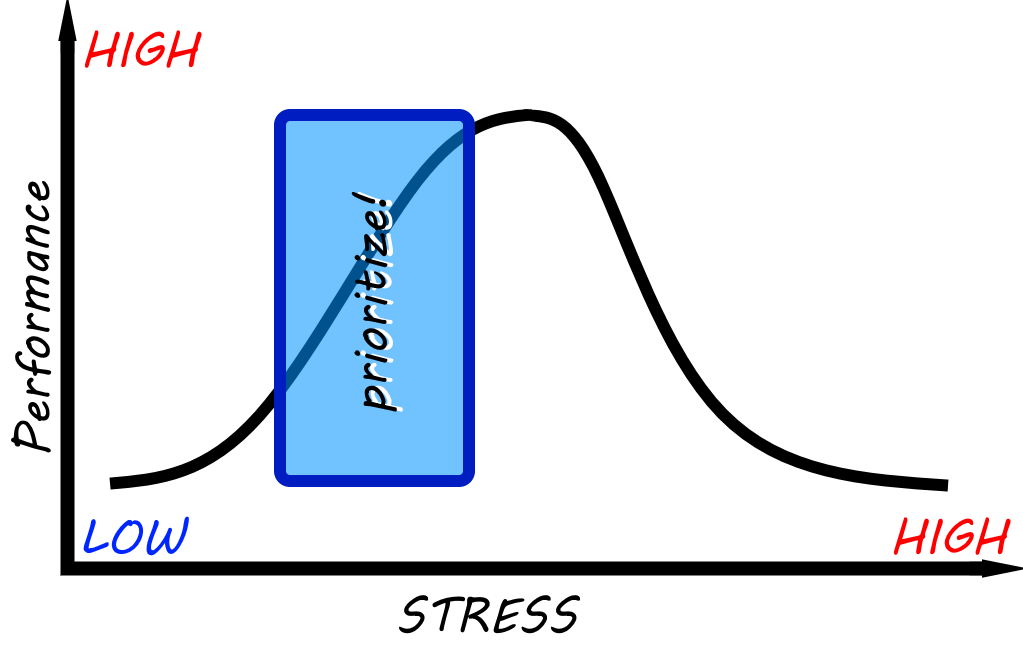
You've got the energy, you can do anything... so don't waste your time. Know your priorities, know your values, and then you can choose the right things to do!
Box 3 - Breathe!

You're flying along - but don't over do it.
Take long slow out breathes. Meditate. Quieten the mind. Listen to your body.
Enter the flow state. Listen to trance and ambient and lo-fi study music.
Watch for when it's time to take a break. Don't over do it.
Box 4 - Rest
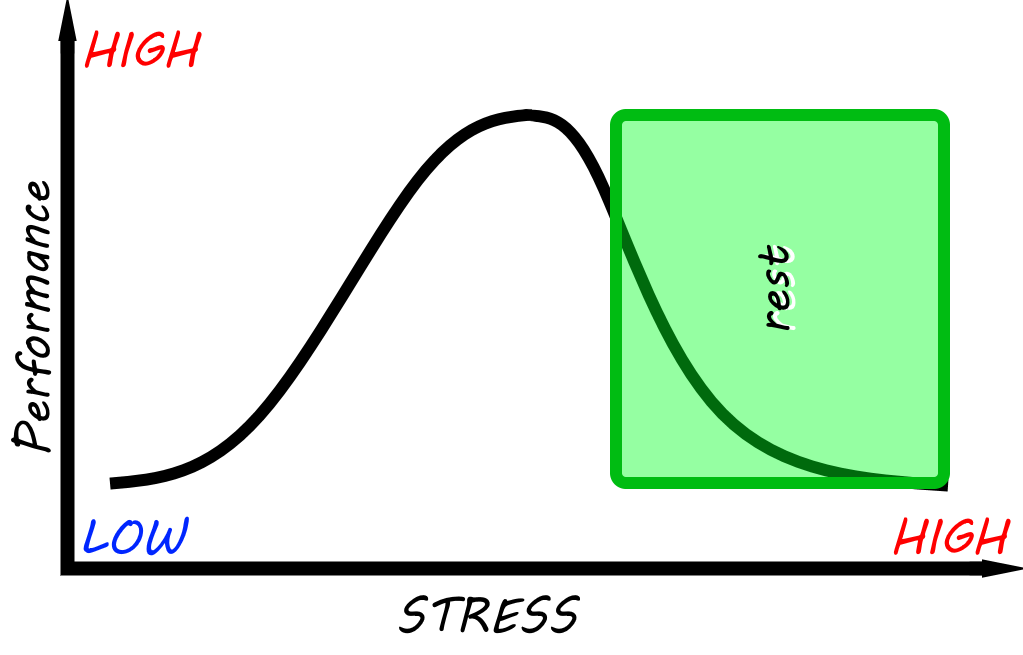
Don't try to push yourself back up to the high energy zone.
Relax, unwind, get some rest, calm right down.
Breathing exercises. Slow gentle stretches.
Goosfraba.
Sources
- original paper: The Relation Of Strength Of Stimulus To Rapidity Of Habit-formation, Robert M. Yerkes and John D. Dodson (1908) - https://doi.org/10.1002/cne.920180503
- Topics of Classic Papers in Psychology -- excellent resource here
- Wikipedia: Yerkes-Dodson Law
- The stages of performance under pressure